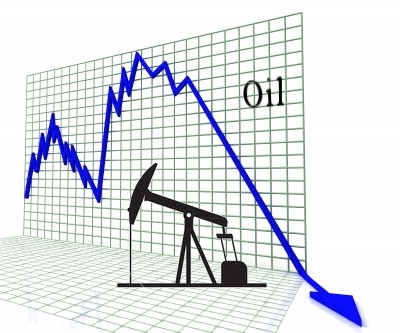Oil prices are falling and that is good for consumers as their daily heating and transportation costs fall. It also benefits producers as a small company could easily save $100,000 a year in energy costs. If you multiply that by the number of businesses in the country you can see the staggering effect lower energy prices can have on the economy. But not everyone is happy about falling energy prices. Many conventional energy and alternative energy producers require oil prices to be above $70/ barrel in order for their business models to remain in the black. And all of the OPEC countries except two require higher oil prices in order for them to balance their countries budgets. So although oil prices are low now it may not last. ~Tim McMahon, editor.
Oil Price Tumbles After OPEC Releases 2015 Forecast
By Andy Tully of Oilprice.com

OPEC’s monthly report said demand for the cartel’s oil will fall to 28.9 million barrels per day next year, 280,000 barrels lower than its previous forecast and the lowest in 12 years. Add to that a new report from the US government’s Energy Information Administration (EIA), which also cut its 2015 forecast for growth in global oil demand by 240,000 barrels per day, down to 880,000 barrels per day.
For 2014, the EIA expects demand will be about 960,000 barrels per day.
And yet on Nov. 27, OPEC refused to lower its production levels below 30 million barrels a day, adding to the oil glut that started with the US boom in high-quality shale oil. As a result, the price of Brent crude has plunged more than 40 percent since June. Futures for US crude also are down dramatically.
“There is a growing realization that the first half of next year is going to look very weak,” Gareth Lewis-Davies, a strategist at the Paris-based bank BNP Paribas, told Reuters. “You start to price that in now.”
On Dec. 9, meanwhile, the American Petroleum Institute (API) reported that inventories of US crude rose during the week ending Dec. 6 by 4.4 million barrels to 377.4 million barrels. The increase was twice as large as had been expected. US backlogs of gasoline and distillates also were up, according to the API.
“Almost all the news flow points to a weaker market,” said one oil analyst, Carsten Fritsch of Commerzbank in Frankfurt. “We have had very bearish API data with large stock builds across the board, and also a very bearish Short-Term Energy Outlook from the EIA, with a sharp reduction in demand growth forecasts for next year.”
Abhishek Deshpande, an oil market analyst at Natixis, agreed. “The fundamentals outlined in the report look quite bearish,” he said. “Fiscal balances are a huge problem for weaker OPEC members, so I won’t be surprised if they call for an emergency meeting [to adjust production levels] early next year.”
In fact, this year’s price plunge hasn’t hurt just the weaker OPEC members. Bloomberg reports that oil prices now are too low for 10 of its 12 members to balance their governments’ budgets. The exceptions, the news agency reports, are Kuwait and Qatar. Saudi Arabia may be losing money on oil at the moment, the news agency says, but its treasury has nearly three-quarters of a trillion dollars in reserve.
What’s missing in this flurry of news, as of midday Dec. 10, is what OPEC plans to do about the balancing the oil glut with the expected stretch of lower demand. And the cartel’s next meeting to discuss production levels isn’t scheduled until June 5, 2015.
You might also like:
Source: https://oilprice.com/Energy/Crude-Oil/Oil-Price-Tumbles-After-OPEC-Releases-2015-Forecast.html
Photo Credit: Stuart Miles and FreeDigitalPhotos.net
